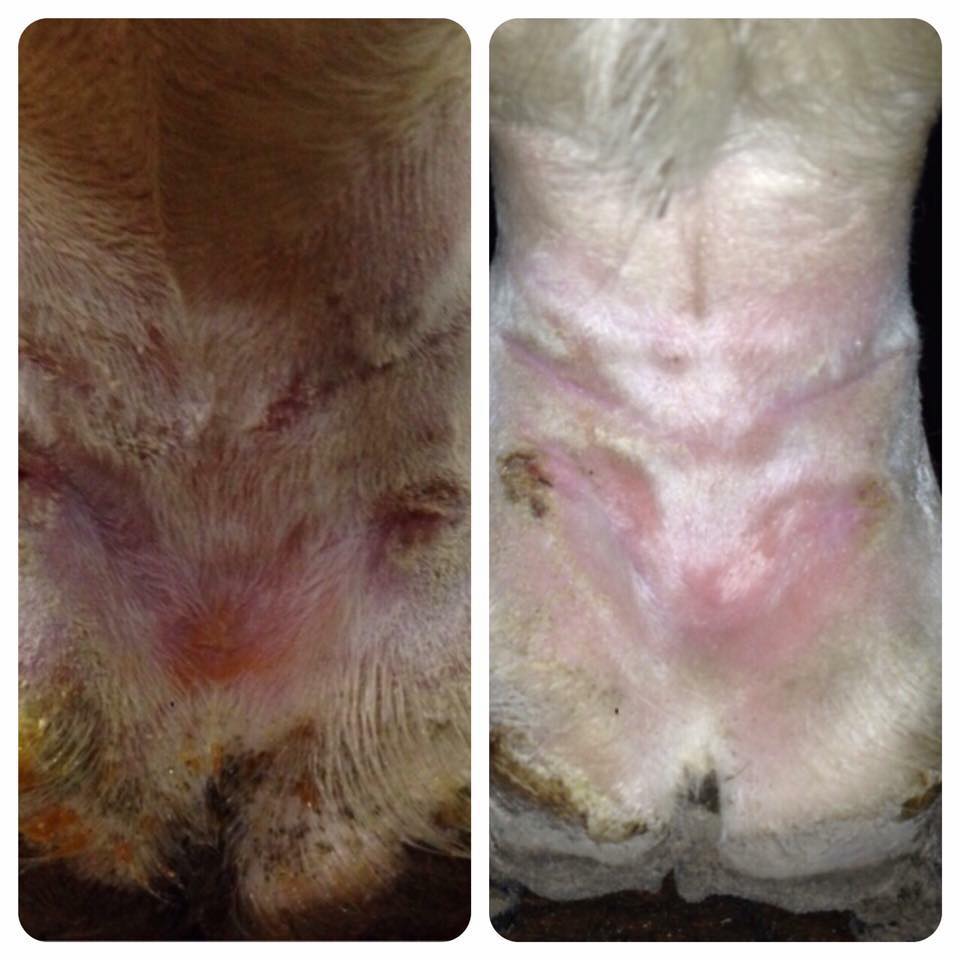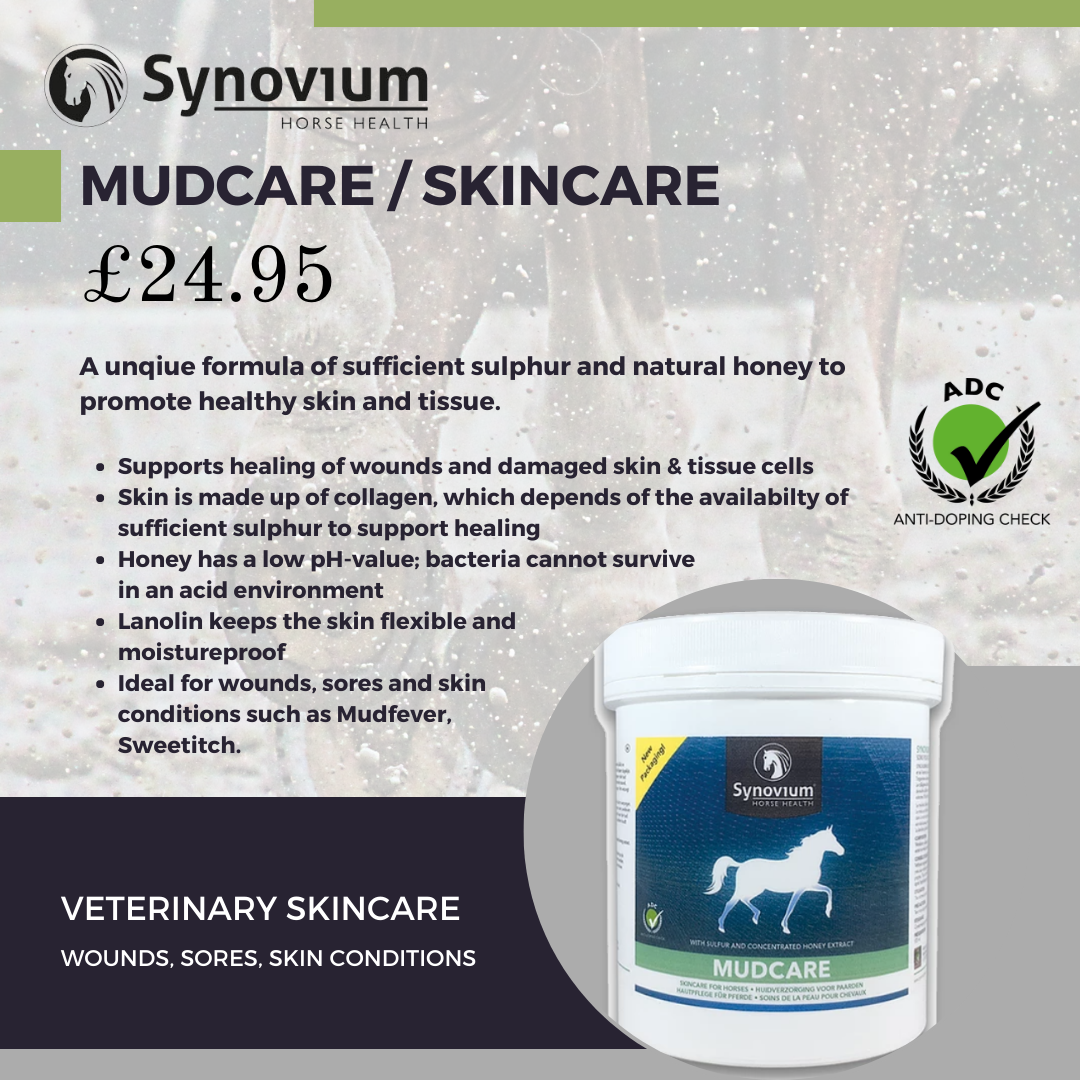Posted: 30th September 2022 | Back to news feed

It is that time of year again when we dread the thought of another winter tackling ‘Mud Fever’, also known as pastern dermatitis. It is a skin condition that can cause irritation, soreness, and scabs with moist lesions underneath.

Mud Fever is most commonly found on the back of the horse’s heels and the fetlocks, but it can extend up the back of the legs in severe cases. Infections can develop underneath the scabs, and you may notice heat and swelling around the area.
As with any bacterial infection, if left untreated Mud Fever can become more serious, very quickly. Infection can spread further up the leg. This level of damage to the skin can result in the open sores being difficult to heal.
Mud Fever is caused by the bacteria (Dermatophilus Congolensis), which thrives in muddy, wet conditions. It generally arises during Winter and early Spring; however, it can continue to cause problems all year for bad sufferers.
Healthy skin would normally act as a barrier, however in muddy and wet conditions, the upper layer of skin can become compromised. This is because the continual damp conditions cause the protective layer to fail, making it vulnerable to infection.
How do I prevent mud fever?
When it comes to Mud Fever prevention is key! Rotating the use of your paddocks can help to prevent them becoming badly churned up, as the bacteria is transmitted via the soil. Try to avoid your horse having to stand in deep mud by fencing high traffic areas such as gateways. Another preventative measure is to put down high quality hardcore in these areas to provide a standing surface and better drainage.
Refrain from washing off your horse’s legs when you bring him in. It is generally better to allow the mud to dry and then brush off with a soft bristled brush to remove the mud. If you must wash your horse’s legs, use a warm (not cold), clean water, and ensure you dry them thoroughly after.
Use a specialised product such as Synovium’s veterinary Mudcare to help keep Mud Fever away. Mudcare contains Lanolin which works by keeping the skin flexible and moisture proof forming a protective layer between the skin and mud.
How do you treat mud fever?
In the unfortunate event that your horse does contract Mud Fever act fast! It is vital you keep them out of the mud and wet as much as possible.
For horses with thick feathers, it is recommended to clip the hair away from the infected area. Clean the designated area using a warm dilute (0.1%) Hibiscrub solution (never neat), rinse it completely with warm, clean water. Removing the loose scabs can help the healing process because the bacteria thrive underneath them, where oxygen is limited. Ensure you dry your horse’s legs thoroughly using a clean, dry, soft towel. Keeping your horse’s legs dry is crucial to treating Mud Fever successfully.
Once your horse’s legs are clean and dry, liberally apply a coat Synovium® Mudcare to the area. Mudcare is a veterinary developed skin care product containing a unique formula of sufficient sulphur and concentrated pure honey. It encourages optimum healing of the horse’s skin and damaged tissue.
Sulphur is present in tissue and is essential for healthy skin. It is a natural antiseptic, helping to kill the bacteria on the skin. Collagen synthesis is essential to the structure of skin cells, and strongly depends on the availability of sufficient sulphur, which is provided in the Synovium Mudcare formula.
Honey has been used since ancient times for healing because it has a low pH-value; bacteria cannot survive in an acid environment. Honey contains small amounts of enzymes that help maintain a healthy skin and combat any irritation, whilst soothing sore skin.
Lanolin helps keep the skin flexible and moisture proof. Synovium’s Mudcare formula has been uniquely developed by our team of vets to provide something you can rely on every winter.
If you are in any doubt, or the condition worsens contact your vet!

For more information visit www.synovium.co.uk
The Equestrian Index newsfeed is compiled from articles submitted by advertising members and expresses the opinions of those members. Watsons Directories Ltd shall not be held liable for any inaccuracies or mis-statements therein.